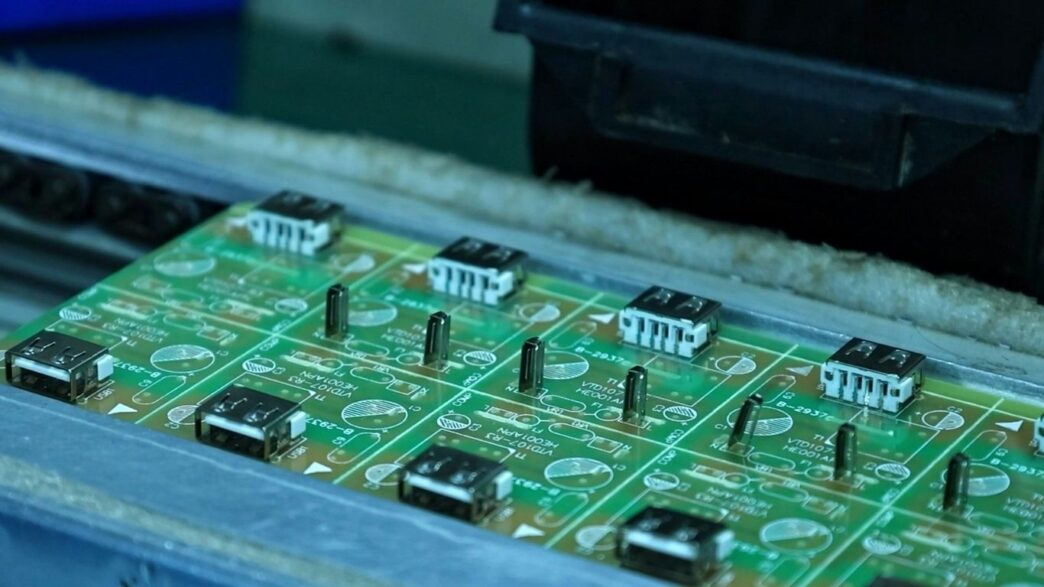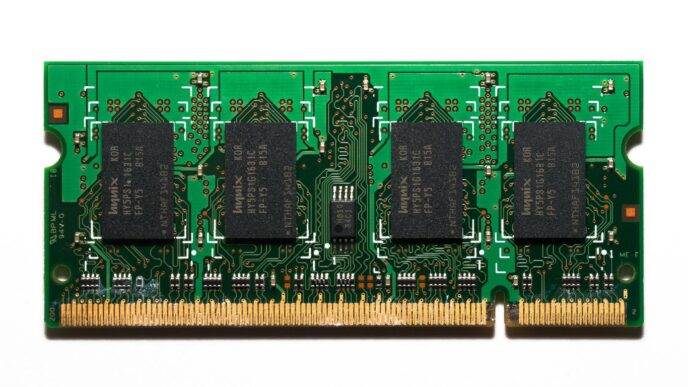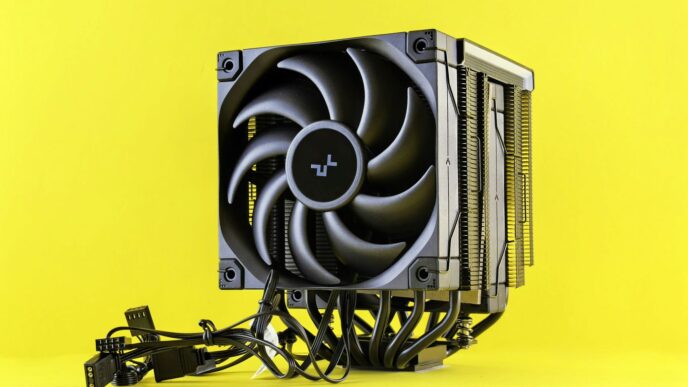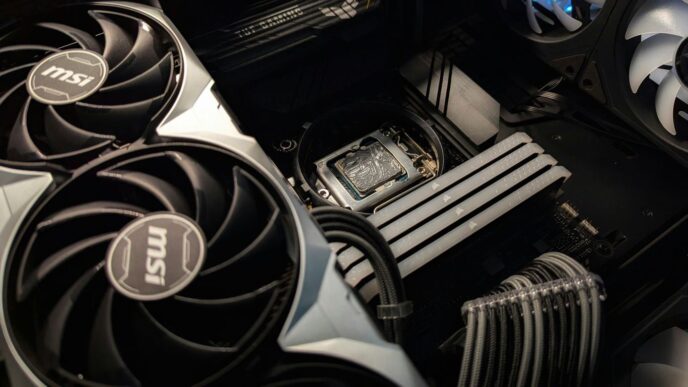It’s 2025, and the world of computer chips is buzzing. We’re looking at who’s selling the most and how the landscape is changing. Think AI, cars, and all the gadgets we use. It’s a big market, and some companies are really making a splash. Let’s break down the semiconductor market share by company to see who’s leading the pack and what’s driving their success.
Key Takeaways
- Nvidia is really stepping up, especially with chips for AI stuff. They seem to be ahead of the game right now.
- Samsung and SK Hynix are still the big names when it comes to memory chips, which are super important for everything.
- Intel, a company that used to be number one for a long time, is changing its position in the market. They’re trying new things.
- The overall semiconductor market is growing, with sales going up quite a bit compared to last year. Things like AI and demand from cars and electronics are pushing this growth.
- Geopolitical issues and trade rules are definitely a concern for these companies, and they’re also thinking about how to be more sustainable.
Global Semiconductor Market Share By Company: A 2025 Overview
Key Players in the Semiconductor Landscape
The semiconductor industry is a complex web of innovation and manufacturing, with a handful of giants really calling the shots. As we look at 2025, the landscape is pretty dynamic. We’re seeing shifts driven by new tech and changing demands across different sectors. It’s not just about making chips anymore; it’s about making the right chips for the future. Think AI, advanced automotive systems, and the ever-present consumer electronics. These areas are pushing companies to adapt and innovate faster than ever.
Market Share Analysis by Company
Understanding who’s leading requires a look at the numbers. While specific percentages can fluctuate, certain companies consistently show up at the top. The market is broadly segmented by chip type, like memory, logic, and processors, and by the manufacturing process (node size). Companies often specialize, but many have diverse portfolios.
Here’s a general breakdown of how the market is often viewed:
- Memory Chips: Dominated by a few major players who control the production of DRAM and NAND flash.
- Logic ICs & Microprocessors: This is where companies focused on CPUs, GPUs, and specialized processors for AI and high-performance computing often shine.
- Analog & Sensors: These chips are vital for everything from power management to data collection in IoT devices and automotive applications.
Leading Semiconductor Manufacturers
When we talk about the top manufacturers in 2025, a few names immediately come to mind. These companies aren’t just big; they’re influential, setting trends and driving technological advancements. Their market share is a reflection of their investment in research, their manufacturing capabilities, and their ability to meet the demands of a rapidly evolving tech world. We’ll be looking at how these leaders are performing and what’s keeping them ahead of the pack.
Dominant Companies Shaping Semiconductor Market Share
It’s pretty wild to see how the semiconductor landscape is shifting, especially as we look towards 2025. Some companies are really making big moves, and it’s changing who’s at the top. Nvidia’s massive growth, largely thanks to the AI chip boom, has put them in a leading position. But it’s not just them; the memory giants and even some of the older players are adapting and holding their ground.
Nvidia’s Ascendancy in AI Chips
Nvidia has been on a tear, and it’s all about artificial intelligence. Their GPUs are basically the go-to for training and running AI models. This demand has pushed their revenue way up, making them a powerhouse in the market. It’s a clear sign that AI isn’t just a buzzword anymore; it’s a major driver of semiconductor sales.
Samsung and SK Hynix: Memory Market Leaders
When you think of memory chips, Samsung and SK Hynix are the names that immediately come to mind. They’ve consistently been at the forefront, and 2025 is no different. They’ve seen significant revenue increases, especially with the demand for high-bandwidth memory (HBM) needed for AI applications. It’s a tough market, but these two are definitely leading the pack in memory.
Intel’s Evolving Position
Intel, a company that used to be synonymous with the top spot, has seen some changes. While they’re still a huge player, especially in CPUs, they’ve dropped a few spots in the overall market share rankings. They’re working on new strategies, including expanding their foundry services and focusing on new chip architectures, to regain some of that lost ground. It’s a big challenge, but Intel has a long history of innovation.
Broadcom’s Strategic Market Presence
Broadcom has carved out a strong niche for itself, particularly in networking and connectivity chips. They’ve been making smart acquisitions and focusing on high-growth areas. Their presence is felt across various sectors, from data centers to telecommunications, making them a consistent and significant contributor to the overall semiconductor market.
Factors Influencing Semiconductor Market Share
So, what’s really moving the needle in the semiconductor world these days? It’s not just one thing, but a mix of big trends and specific demands. The rapid growth of AI applications is a massive driver, pushing demand for specialized chips like never before. But that’s just part of the story.
Impact of AI and Emerging Technologies
Artificial intelligence is everywhere, and it needs serious computing power. This means companies making the chips that power AI models, like those for machine learning and data centers, are seeing huge demand. Think about it: every new AI feature, every complex calculation, needs faster and more efficient processors. Beyond AI, other emerging tech like advanced networking (think 5G and beyond) and the Internet of Things (IoT) also require specialized chips. These aren’t your grandpa’s microprocessors; they’re designed for specific, often demanding, tasks.
Growth Drivers in Automotive and Industrial Sectors
It’s easy to think of semiconductors just for phones and computers, but cars and factories are becoming huge consumers. Modern vehicles are packed with electronics for everything from self-driving features to infotainment systems. Similarly, industrial automation, smart factories, and robotics rely heavily on sophisticated chips to operate efficiently and safely. These sectors are showing steady, strong growth, adding another layer to the demand for semiconductors.
Consumer Electronics Demand Dynamics
While AI and industrial uses are big, good old consumer electronics still play a major role. Things like smartphones, laptops, gaming consoles, and smart home devices continue to be popular. Even though the market for some of these might be more mature, there’s always a push for newer, better, and more connected gadgets. This consistent demand, especially for high-performance devices, keeps the consumer electronics segment a significant factor in the overall semiconductor market share.
Regional Dynamics and Semiconductor Market Share
The global semiconductor market isn’t just about who makes the most chips; it’s also heavily influenced by where these companies are based and where the manufacturing happens. It’s a complex web, really.
Asia-Pacific’s Dominance in Manufacturing
When you look at where the actual silicon wafers get turned into chips, Asia-Pacific is the undisputed heavyweight. Countries like Taiwan, South Korea, and China are home to the world’s largest foundries and assembly facilities. This concentration means that a lot of the global supply chain is tied to this region. Any disruption here, whether it’s a natural event or a political issue, can send ripples across the entire industry.
North America’s Role in Innovation
While Asia-Pacific leads in manufacturing volume, North America, particularly the United States, remains a powerhouse for chip design and research. Many of the leading fabless semiconductor companies, the ones that design chips but don’t manufacture them, are based here. Think of companies like Nvidia and Qualcomm. This region is also a major consumer of advanced chips, especially for AI and data centers. The push for domestic manufacturing, however, is also gaining traction, with significant investments being made.
European and Other Regional Contributions
Europe plays a significant role, especially in areas like automotive semiconductors and industrial applications. Companies like Infineon and STMicroelectronics have strong footholds in these sectors. While not on the same scale as Asia-Pacific for sheer manufacturing volume or North America for design innovation, Europe contributes specialized knowledge and a dedicated market. Other regions, like the Middle East and Africa, are emerging markets with growing demand, though their direct contribution to global market share is currently smaller.
Company Performance and Revenue Trends
Looking at how the big players in the semiconductor world are doing financially gives us a good idea of where the market is headed. It’s not just about who makes the most chips, but also about how much money they’re bringing in and how that’s changing over time.
Quarterly Revenue Growth Analysis
We’ve seen some pretty solid growth across the board in the first half of 2025. The overall global chip sales for Q2 2025 hit $180 billion, which was a nice jump from Q1 and a significant 19.6% increase compared to the same time last year. This marks the sixth quarter in a row with year-over-year growth of more than 18%. Most companies reported good gains from Q1 to Q2, with an average increase of about 7%. The memory chip makers, like SK Hynix, Samsung, and Micron, really stood out with some of the biggest percentage increases in their revenue.
Year-over-Year Sales Performance
When we look back at the whole picture, the year-over-year sales figures are pretty impressive. For instance, September 2025 saw global chip sales jump 25.1% compared to September 2024. This trend of strong year-over-year performance has been consistent. Even looking back at earlier months in 2025, like April, sales were up 22.7% compared to the previous year. It seems like the industry has been on a strong upward trajectory.
Projected Revenue for Key Companies
Looking ahead, the outlook for many companies remains positive. For Q3 2025, most companies are expecting continued revenue growth. The memory sector, especially, is seeing big projections, with companies like Micron and Kioxia anticipating substantial increases, largely thanks to the demand from AI applications. AMD is also projecting a good increase, again driven by AI. However, not everyone is seeing the same upward trend; some companies, like MediaTek, are expecting a dip due to a slower mobile market.
Here’s a look at how some of the top companies stacked up in Q2 2025, based on available data:
| Company | Estimated Q2 2025 Revenue | Notes |
|---|---|---|
| Nvidia | $45 billion | Leading in AI chips |
| Samsung | (Ranked 2nd) | Memory market leader |
| SK Hynix | (Ranked 3rd) | Memory market leader |
| Broadcom | (Ranked 4th) | Strong market presence |
| Intel | (Ranked 5th) | Long-time leader, now shifting position |
It’s clear that while some companies are soaring, especially those tied to AI, others are facing different market conditions. Keeping an eye on these revenue trends helps us understand the shifting landscape of the semiconductor industry.
Strategic Considerations for Semiconductor Companies
Alright, so looking ahead to 2025 and beyond, semiconductor companies have a lot on their plate. It’s not just about making the next best chip; there are bigger forces at play that can really shake things up.
Navigating Geopolitical Tensions and Trade Policies
This is a big one. We’ve seen how trade policies and international relations can directly impact chipmakers. Think about export restrictions or tariffs – they can mess with supply chains and market access pretty quickly. Companies need to be really smart about where they source materials and where they sell their products. It’s like trying to play chess on a global scale, where one wrong move can cost you a lot. For instance, the US has put some restrictions on certain AI chips going to China, and China is trying to get around that by recruiting talent. It’s a constant back-and-forth that requires careful planning. Staying flexible and having backup plans for supply and distribution is key.
Investment in Research and Development
This one’s pretty obvious, right? If you’re not innovating, you’re falling behind. The pace of technological change in semiconductors is just wild. Companies need to keep pouring money into R&D to develop new materials, better designs, and more efficient manufacturing processes. It’s not just about keeping up; it’s about getting ahead of the curve. Think about the demand for AI chips or the advancements needed for electric vehicles – that all comes from serious R&D. The IT and telecom advancements are a huge driver here.
Sustainability and ESG Initiatives
This is becoming more and more important. Customers, investors, and even governments are paying closer attention to how companies operate from an environmental, social, and governance (ESG) perspective. This means looking at things like reducing energy consumption in manufacturing, managing waste responsibly, and ensuring fair labor practices throughout the supply chain. It’s not just about looking good; it’s about building a more resilient and responsible business for the long haul. Companies that get this right can build stronger relationships and attract more business.
Wrapping It Up: What’s Next for Chips?
So, looking at everything, the chip market in 2025 is still a pretty big deal, with lots of companies making good money. We’ve seen some shifts, with folks like Nvidia doing really well, especially with AI stuff, and memory chip makers like Samsung and SK Hynix right up there too. It’s not just about who’s on top, though. Things like new tech, government actions, and even global politics are all playing a part. It’s a fast-moving scene, and keeping an eye on how these big players and new trends shake out is going to be interesting for a while.
Frequently Asked Questions
What is the semiconductor market?
The semiconductor market is all about the tiny computer chips that power our electronics, from phones and computers to cars and smart appliances. It’s a huge global business where companies design and make these essential components.
Who are the biggest players in the semiconductor market?
Some of the top companies making big waves in this market include Nvidia, known for its powerful AI chips, and memory chip giants like Samsung and SK Hynix. Intel is also a major player, though its position is changing. Broadcom is another significant company with a strong presence.
What’s driving the growth in the semiconductor market?
A lot of the growth comes from new technologies like Artificial Intelligence (AI) and the increasing demand for chips in cars and industrial equipment. Also, people keep buying more consumer electronics, which also need these chips.
Which regions are most important for semiconductors?
The Asia-Pacific region is a powerhouse for manufacturing these chips. North America is a leader in creating new chip designs and innovations. Other regions like Europe also contribute significantly.
How are companies performing in the semiconductor market?
Many companies are seeing their sales go up, especially those making chips for AI and memory. While some have seen ups and downs, the overall trend for many key companies shows strong growth, with predictions for even more sales in the future.
What challenges do semiconductor companies face?
Companies have to deal with tricky global politics and trade rules, which can affect their business. They also need to invest a lot in creating new technologies and think about being environmentally friendly and socially responsible.














